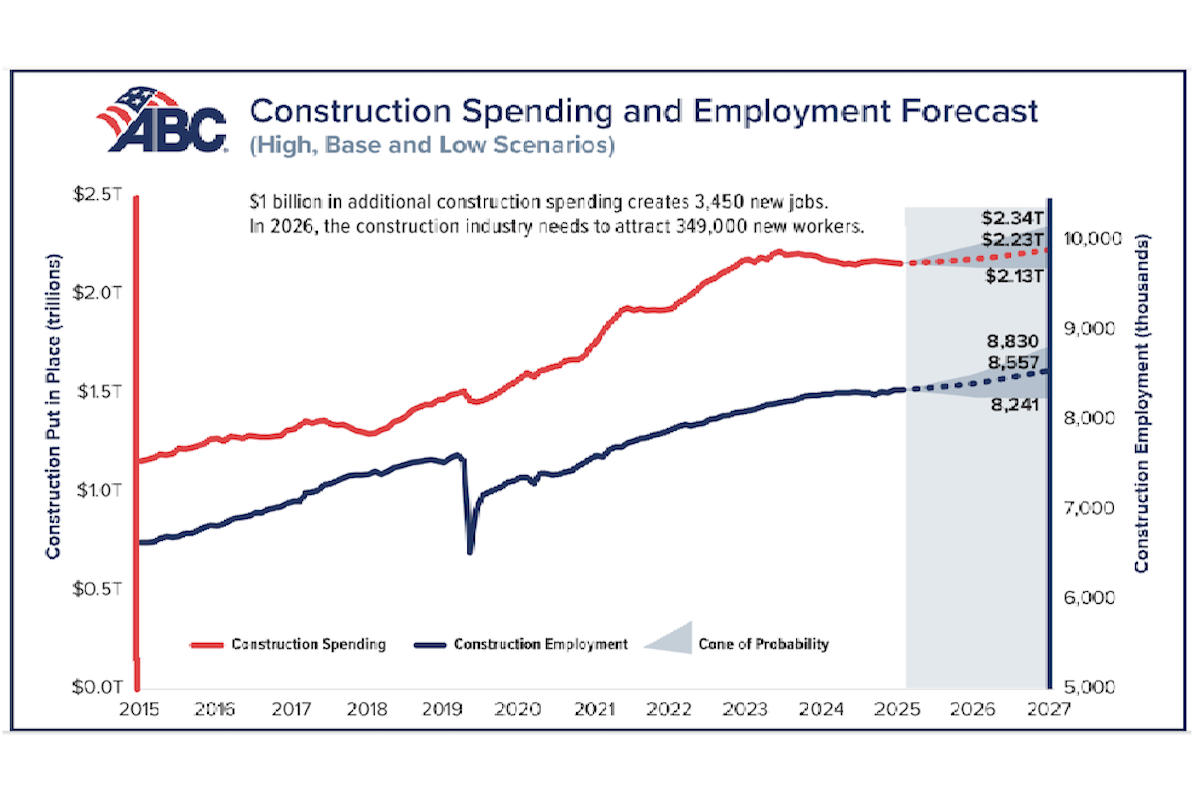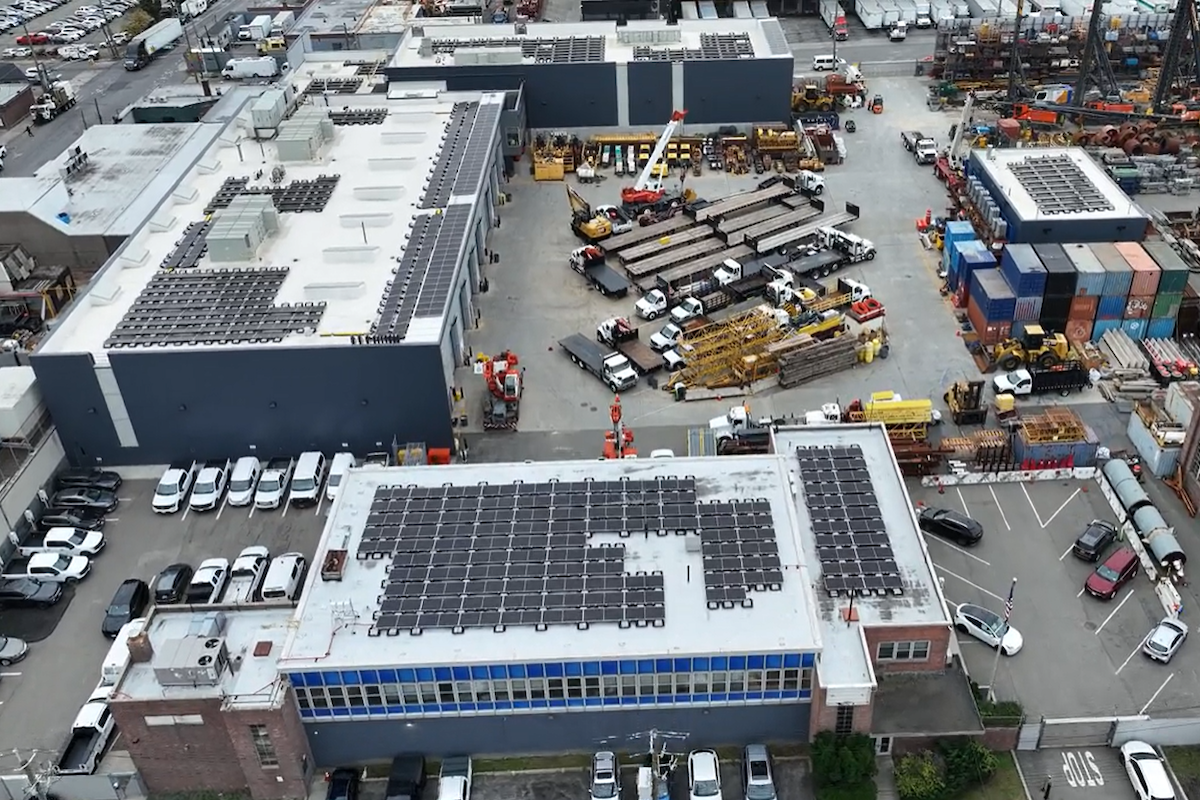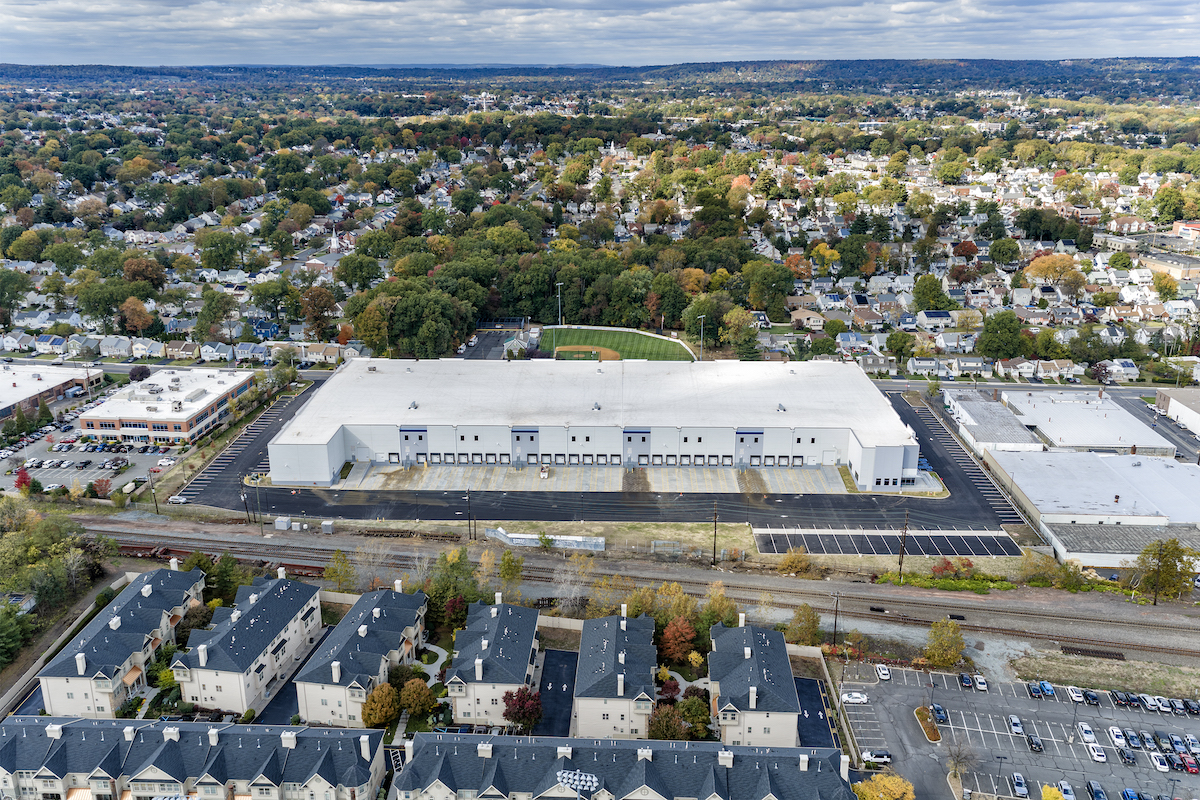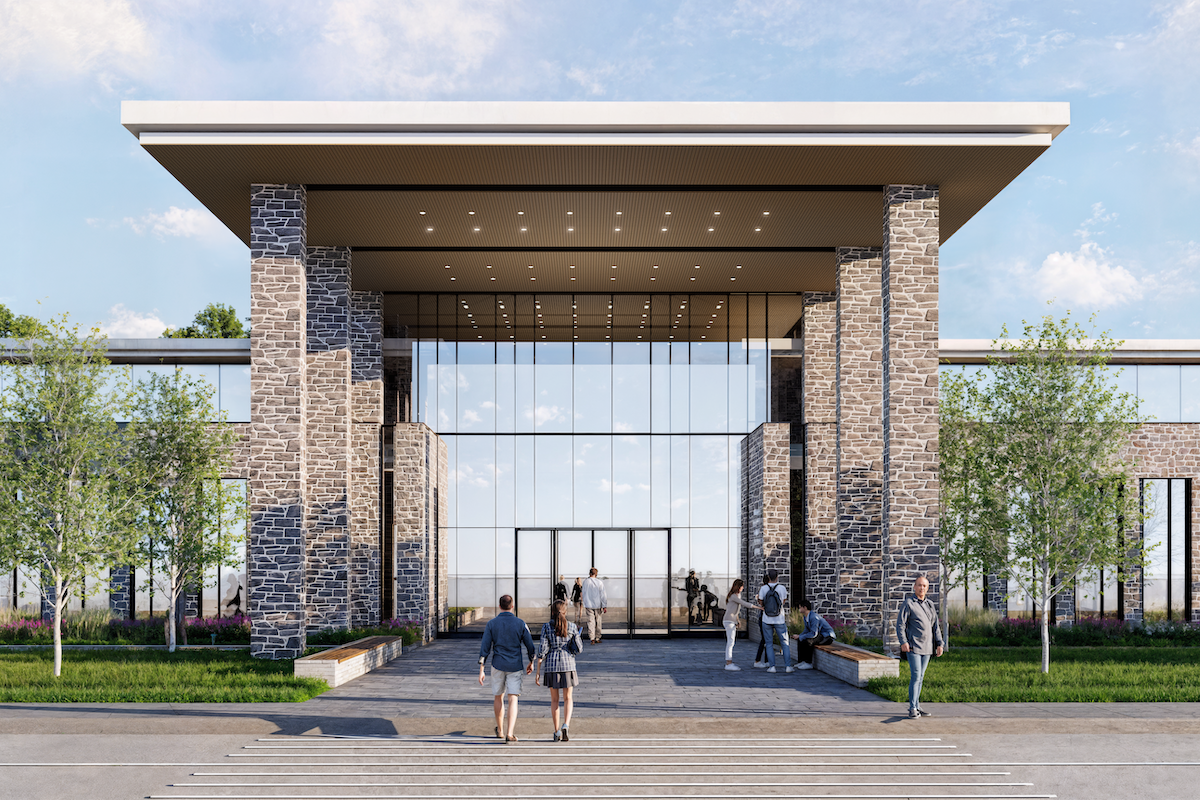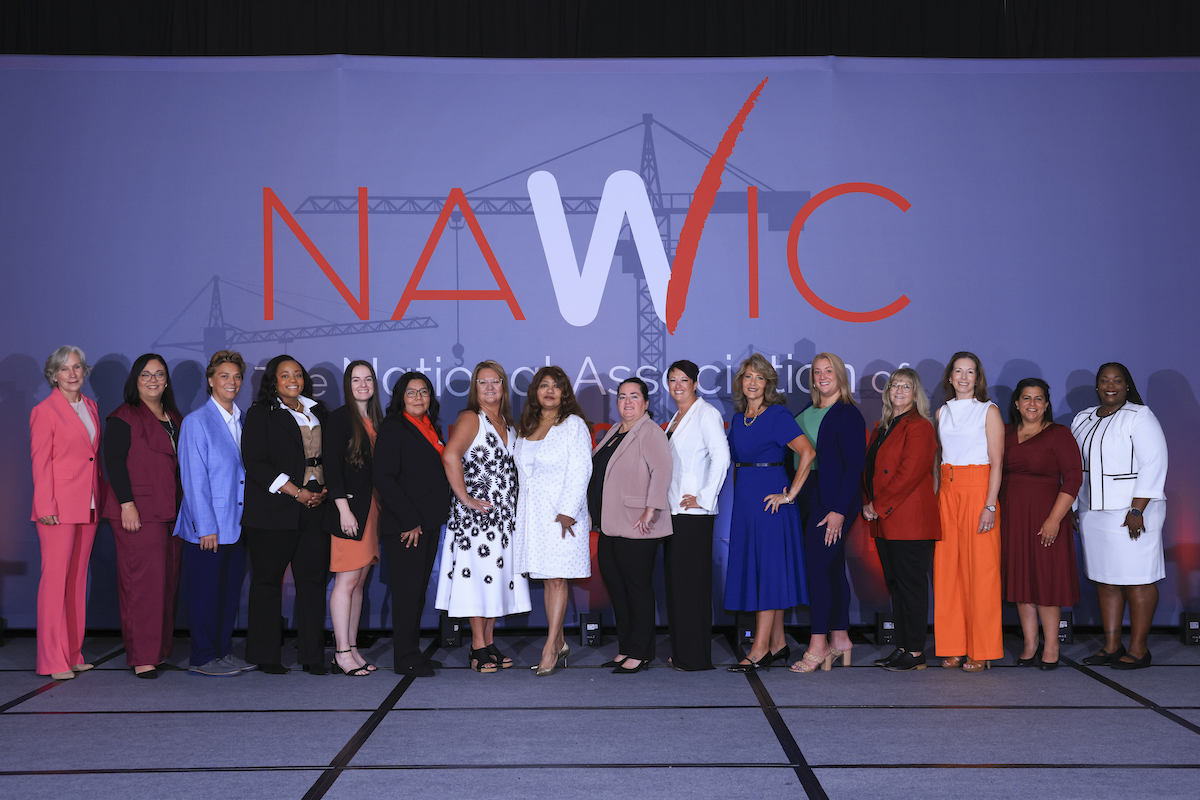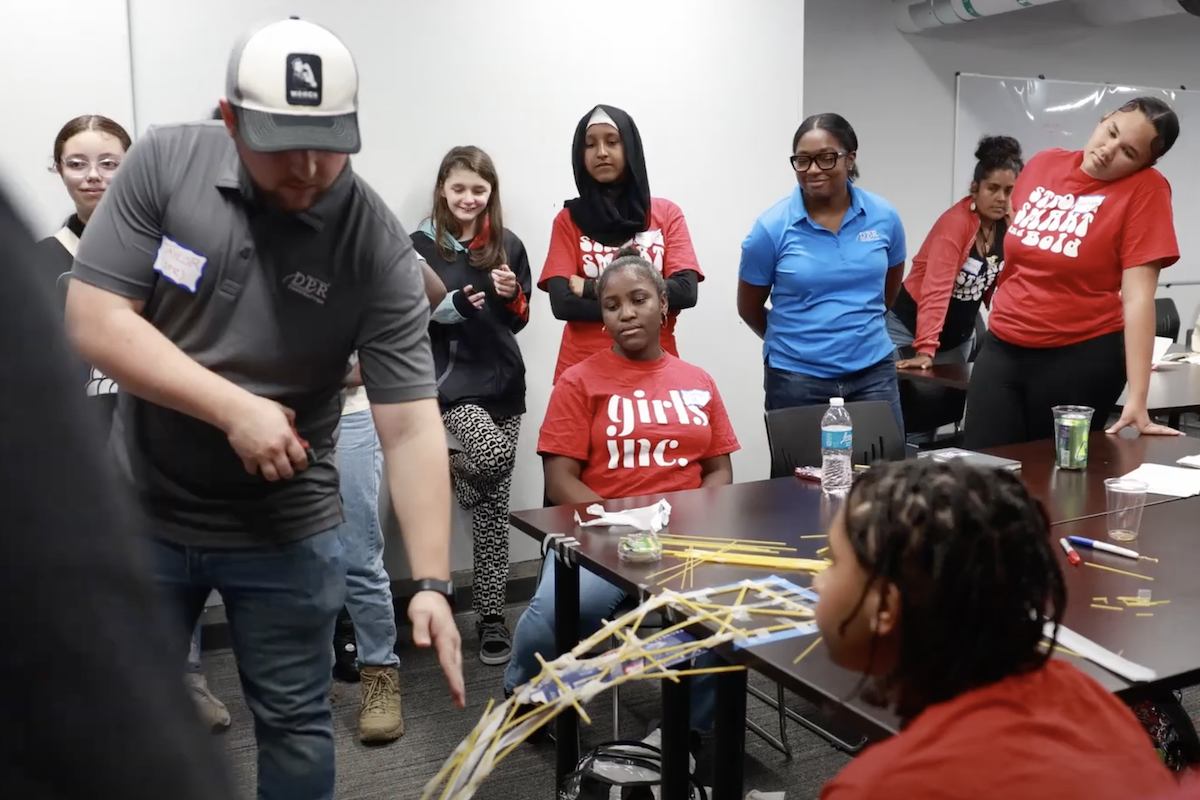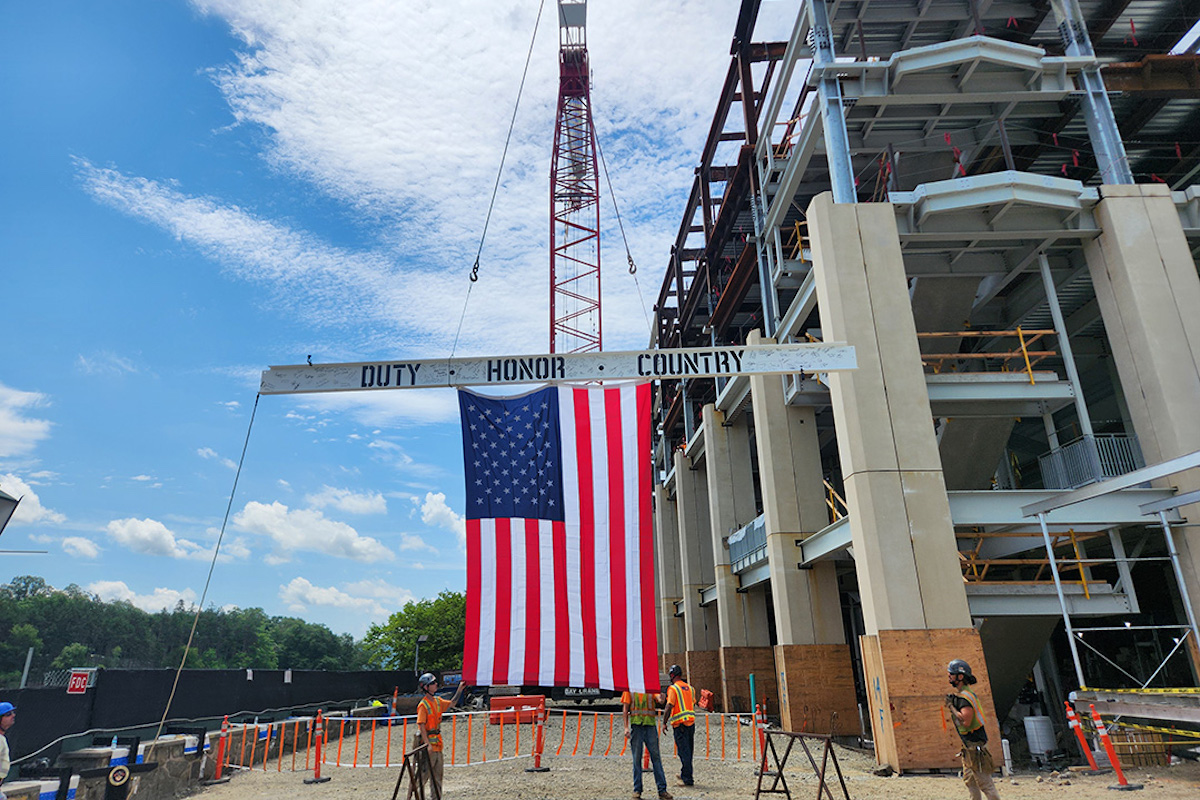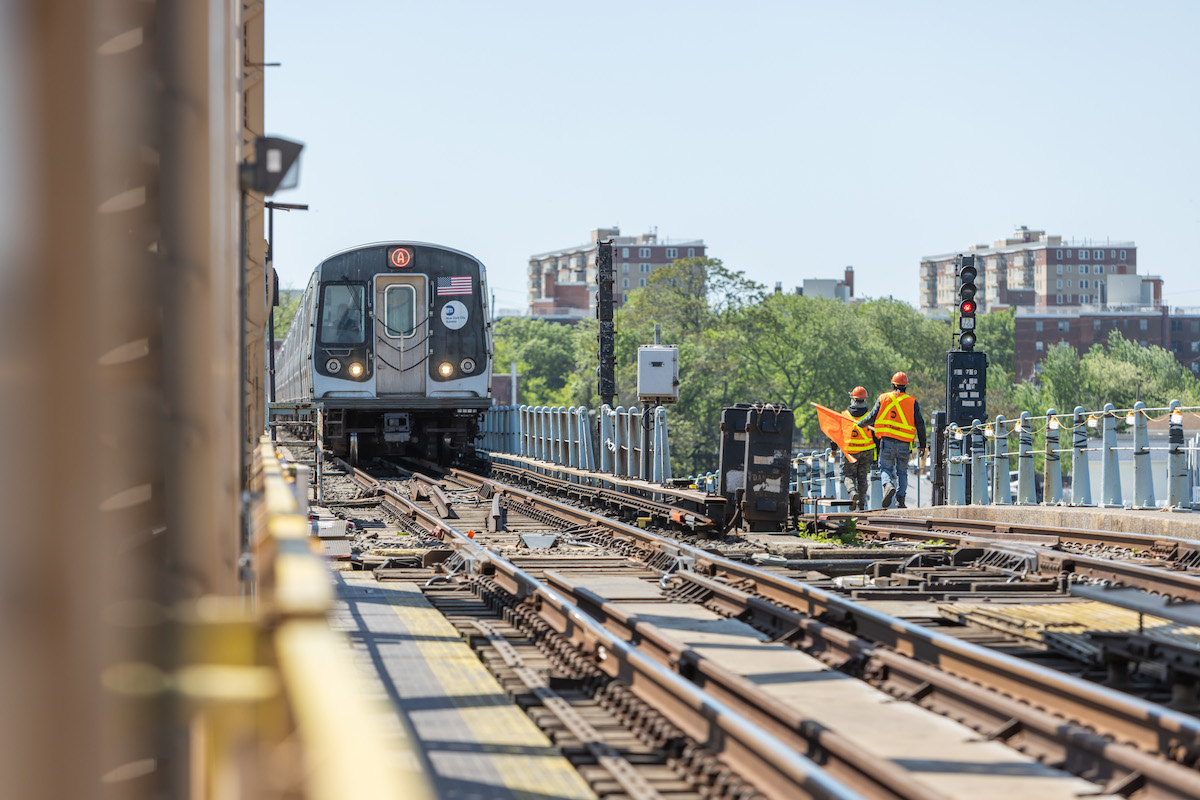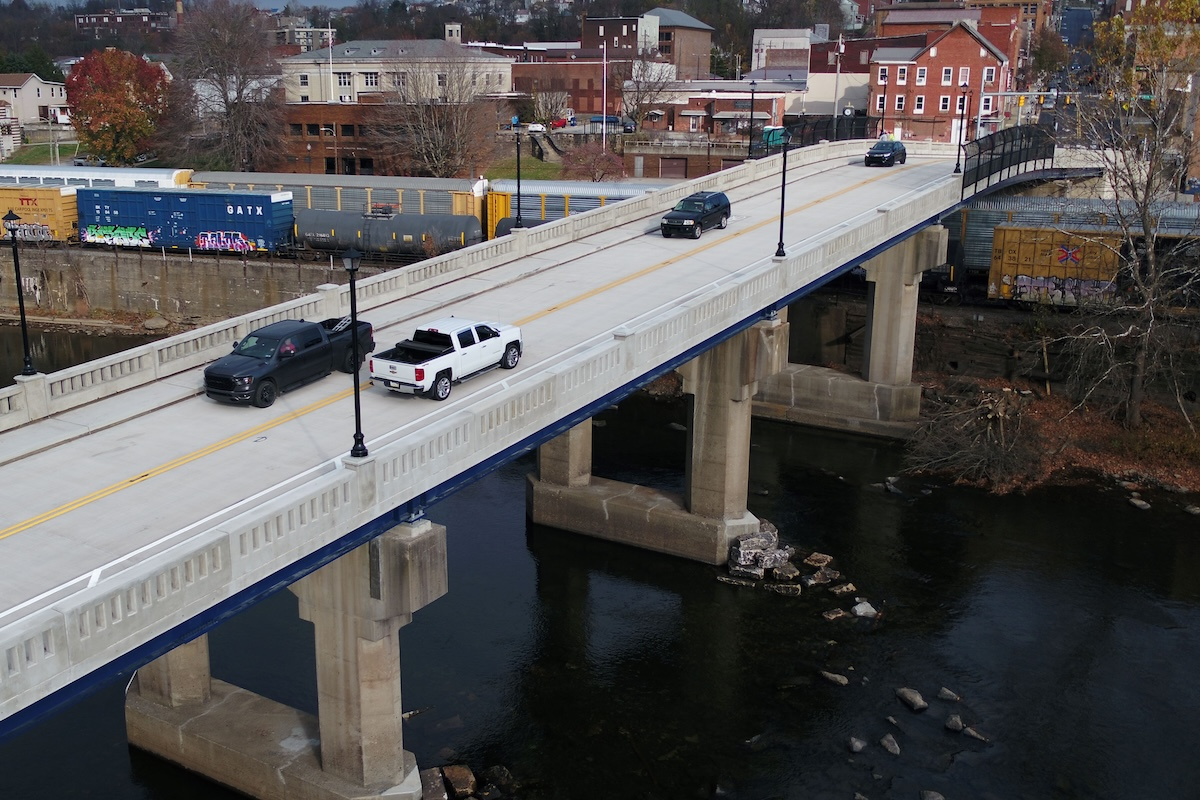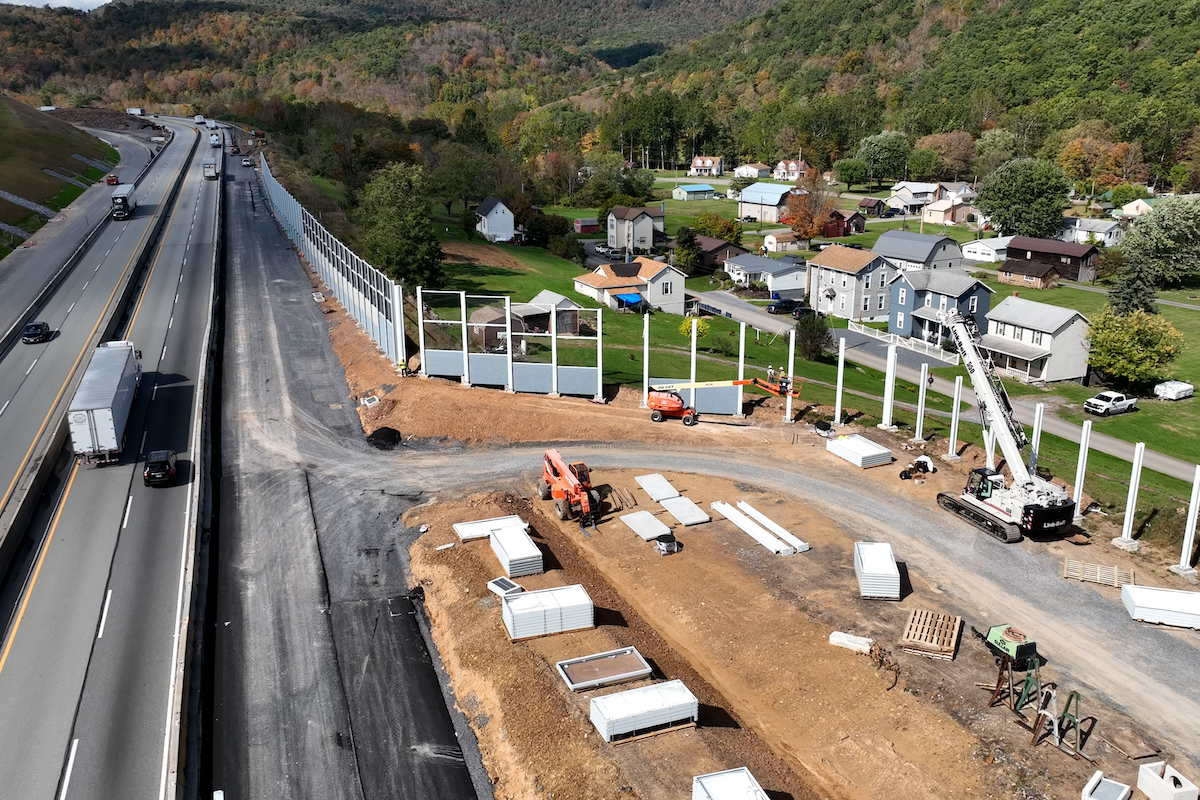Over two years have passed since Congress passed the Infrastructure Investment and Jobs Act (IIJA), and hundreds of substantial infrastructure improvement projects are already in full swing across the country. Highlighted below are a few of the top-funded projects underway in Alabama, Florida, Georgia, and eastern Tennessee.
- $4.1 billion for transportation investments, including roads, bridges, public transit, ports, airports, electric vehicle charging stations, and electric buses.
- $257.9 million in grants, rebates, and other incentives to boost the use of clean energy, buildings, and manufacturing. These funds are in addition to incentives created by the Inflation Reduction Act.
- $120.1 million for climate resiliency and hardening against other threats.
- $379.1 million for improving access to clean water and water infrastructure, including $89.8 million for replacing lead pipes and service lines.
IIJA Funding: $56.19 million
Construction Start Date: 2023
End Date: 2024
The project to widen Interstate 59 from I-459 to Chalkville Mountain Road, a distance of about 4 miles, will provide additional capacity in this congested area and accommodate future traffic volumes, including those generated by the Birmingham Northern Beltline. With an estimated cost of approximately $80 million, the project will reconstruct existing mainline and ramp pavement and add an additional lane in each direction.
“This is just one of many Alabama roads benefiting from our Rebuild Alabama effort,” Alabama Governor Kay Ivey said. “We are all familiar with the phrase ‘no man left behind.’ Well, Rebuild Alabama seeks to ensure we have no road, bridge, or area of our state left behind.”

| Your local Trimble Construction Division dealer |
|---|
| SITECH Northeast |
| SITECH Allegheny |
Railroad Crossing Elimination on Shelby County Road 52
IIJA Funding: $41.77 million
Construction Start Date: 2023
End Date: 2028
The City of Pelham will permanently close two CSX railroad crossings on County Road 52 (CR-52) at Lee Street. CR-52 is an essential link between Pelham and Helena and connects both cities to Interstate 65, the state's major north-to-south arterial, ultimately connecting to the cities of Birmingham, Huntsville, Montgomery, and Mobile. CR-52 is a vital east-to-west collector roadway across the southern Birmingham metropolitan area and is currently carrying a higher volume of traffic than any other east-to-west connector in the area, except Interstate 459.
There are currently two at-grade railroad crossings that frequently restrict access across CR-52 and obstruct emergency vehicles responding to calls for help. The community strongly favors the construction of the bridge to address the long-standing and worsening problem of blocked grade crossings that disrupt mobility and pose risks to life safety. When the crossings are blocked, emergency responders east of the tracks cannot respond to calls west of the tracks. During these times, an emergency response must be requested from neighboring cities, which lengthens response times.
The estimated cost of the project is $52,410,313. The City of Pelham, the City of Helena, Shelby County, and CSX are committed funding partners. The grant covers 80 percent of the project costs, and the partners will fund the remaining 20 percent.
CBD I-20/59 Bridge Replacement
IIJA Funding: $39.57 million
The CBD Bridge Project is the largest project in the Alabama Department of Transportation’s history. Scope of work includes replacement of the I-59/I-20 bridges and approaches on I-59/20 from the I-65 interchange to north of the 31st Street North Interchange. The project involves the redesign of the route interchange with I-59/20 and Red Mountain Expressway, as well as the demolition and rebuilding of bridges.
The new CBD replacement bridges will provide a safer design and represent the best option for this vital interstate route through Alabama’s largest city. The elevated portions of I-59/20 through downtown Birmingham’s Central Business District are over 40 years old and in disrepair. Current usage is approximately 160,000 vehicles per day, which is twice the design capacity, requiring the replacement and upgrade of the viaduct. The span-by-span construction was done with falsework towers and completed during a one-year shut down of I-59/20 through Birmingham.
- $11.1 billion for transportation investments, including roads, bridges, public transit, ports, airports, electric vehicle charging stations, and electric buses.
- $752 million in grants, rebates, and other incentives to boost the use of clean energy, buildings, and manufacturing. These funds are in addition to incentives created by the Inflation Reduction Act.
- $1.5 billion for climate resiliency and hardening against other threats.
- $994.9 million for improving access to clean water and water infrastructure, including $366.4 million for replacing lead pipes and service lines.
IIJA Funding: $1.1 billion
A comprehensive effort is underway to protect and restore America’s Everglades — now and for future generations. New data demonstrates the success of restoration and resilience projects across the Florida region, proving recent investments and momentum are working.
On January 10, 2023, Florida Governor Ron DeSantis signed Executive Order 23-06 (Achieving Even More Now for Florida’s Environment) to enhance ongoing efforts to expedite restoration projects and further advance the protection of Florida’s natural resources. Executive Order 23-06 was issued exactly four years to the day after he signed Executive Order 19-12 (Achieving More Now for Florida’s Environment) that resulted in record environmental funding, expedited Everglades projects, and water quality improvements. Florida has celebrated more than 65 ribbon cuttings, groundbreakings, and major milestones on Everglades projects since January 2019.
The State of Florida will continue its significant efforts implementing Comprehensive Everglades Restoration Plan projects to improve the quantity, quality, timing, and distribution of water within the Greater Everglades Ecosystem. Unprecedented state funding and momentum are making a difference to protect Florida’s natural resources, support the state’s economy, and restore America’s Everglades.
Carbon Storage Validation and Testing
IIJA Funding: $88.35 million
To achieve net-zero emissions by midcentury, the United States will need to capture, transport, and permanently store hundreds of millions of tons of carbon dioxide each year. This will require a concerted effort to build out the infrastructure to store large quantities of carbon dioxide in geologic storage facilities. The Biden-Harris Administration is committed to ensuring that carbon management projects are designed, built, and operated safely and responsibly, and in a way that reflects the best science and responds to the needs and inputs of local communities.
Tampa Electric Company, Tampa, Florida, will perform a site characterization study for the proposed Polk Carbon Storage Complex located near an existing natural gas power station in Polk County, Florida. The Department of Energy’s National Energy Technology Laboratory — under the purview of the Office of Fossil Energy and Carbon Management — will manage the selected projects.
South Florida Regional Transportation Authority
IIJA Funding: $71.7 million
Construction Start Date: 2025
End Date: 2030 to 2032
To meet public demand, the South Florida Regional Transportation Authority is strategically planning for several needed transit projects to provide for the future regional mobility needs of South Florida’s resident and visitors. These projects will allow people to rely on transit and enjoy the benefits of avoiding increasingly congested highways, while saving money on gas, as well as on auto insurance and maintenance.
These projects complement existing and planned transit service by transportation partners and will provide the backbone of an expanded regional transportation system that may include light rail, busways, streetcars, and rapid bus transit, as well as others. The current projects include, Regional Transit Oriented Development, Tri-Rail Coastal Link, and Tri-Rail Station Improvements.
- $6.9 billion for transportation investments, including roads, bridges, public transit, ports, airports, electric vehicle charging stations, and electric buses.
- $949.3 million in grants, rebates, and other incentives to boost the use of clean energy, buildings, and manufacturing. These funds are in addition to incentives created by the Inflation Reduction Act.
- $304.6 million for climate resiliency and hardening against other threats.
- $486.4 million for improving access to clean water and water infrastructure, including $95.5 million for replacing lead pipes and service lines.
IIJA Funding: $178.22 million
Construction Start Date: 2024
End Date: 2026
With significant expected growth of the U.S. electric vehicle (EV) and stationary energy storage market, demand for lithium-ion batteries will grow considerably and necessitate a robust, secure, and local supply chain.
The Orbia-Solvay partnership secures supply of critical minerals and intermediate materials from Orbia, from which Solvay will manufacture suspension-grade PVDF — a lithium-ion binder and separator coating in electric vehicle batteries. Solvay brings process technology and global market know-how to this venture. In combination, Solvay’s Solef PVDF innovations and Orbia’s material assets and production expertise will enable delivery of PVDF that allows electric vehicles to go further on each charge, extends battery life, and improves battery safety in turn.
“Solvay thanks the Biden Administration and the DOE for its support in creating a robust and resilient battery supply chain in the U.S. that brings important clean energy jobs,” said Mike Finelli, Chief Technology and Innovation Officer and Chief North America Officer at Solvay. “With demand for EVs growing rapidly, this project would be a major step forward in building a modern energy economy, providing material for more than 5 million EV batteries per year at full capacity, and creating hundreds of jobs throughout the value chain, including for economically disadvantaged and underrepresented communities.”
Hartsfield-Jackson Atlanta International Airport
IIJA Funding: $172.8 million
Hartsfield-Jackson airport has received numerous grants from the IIJA, including $40 million to widen, update, and modernize the 40-year-old Concourse D.
“Hartsfield-Jackson is the busiest and most efficient airport in the world, and we need to invest in its infrastructure for continued growth and leadership of the commercial aviation industry,” said Atlanta Mayor Andre Dickens. “This grant will create good-paying jobs as we widen Concourse D to bring the 40-year-old structure up to the level of the airport’s six other concourses.”
Right now, Concourse D is only two-thirds the size of the airport’s other facilities that house airline gates. With a goal of LEED Gold certification, the $1.3 billion Concourse D project will increase capacity, improve airport efficiency, and enhance passengers’ experience.
To minimize disruptions to operations, 19 modules will be built on a lot adjacent to the facility then transported across the airfield overnight for installation. Construction of the first prefabricated modules began in December 2023, and project completion is expected by summer 2029.
Savannah Harbor Expansion
IIJA Funding: $48 million
The Savannah Harbor Expansion Project (SHEP) has received strong bipartisan support at the state and federal levels since the project was authorized. The project will deepen the Savannah Harbor federal shipping channel from a depth of -42 feet to -47 feet. Studies demonstrate the deepening will produce substantial economic benefits for the nation by enabling larger and more heavily-loaded vessels to call on the harbor with fewer tidal delays. The ability to accommodate larger ships will also lower costs per container, and businesses will see savings of $213 million annually. For every $1 spent on the SHEP, there will be $7.3 returned in total economic output.
The total project cost estimate is currently $973 million. Costs of the studies and construction are shared between the U.S. government and the State of Georgia. The U.S. Army Corps of Engineers (USACE) is the lead federal agency for the project. The estimated time frame for construction is seven years.
Given the proximity of the shipping channel to sensitive estuarine resources, USACE, along with its state and federal partners, conducted exhaustive engineering and environmental studies to identify the environmental impacts that would be expected from the project and ensure those impacts will be offset through mitigation. Mitigation accounts for approximately half of the project cost.
Environmental mitigation features include installing a dissolved oxygen system; constructing a fish bypass upstream at the New Savannah Bluff Lock and Dam; re-routing freshwater flow in the upper harbor; preserving 2,245 acres of freshwater wetlands for the Savannah National Wildlife Refuge; and recovering remnants of the CSS Georgia civil war ironclad that rested some 40 feet below the river's surface.
Transform Pryor Street and Central Avenue to Safe Streets
IIJA Funding: $30 million
Construction Start Date: 2023
End Date: 2027
This award will help the City of Atlanta transform Pryor Street and Central Avenue with new protected bike lanes, pedestrian hybrid beacons, crosswalk lighting, safe speed limits, edge lines, and additional safety improvements. The project also represents a major expansion of Atlanta’s current bike network.
“The Bipartisan Infrastructure Law is already investing in Georgia’s economy and making Atlanta a safer place for pedestrians and bikers,” Senator Reverend Warnock said. “I’m thrilled to see protected bike lanes and pedestrian facilities come to Pryor Street and Central Avenue. The federal investments to connect the Southside Beltline trail to Atlanta’s downtown will help create jobs, alleviate traffic, and support Atlanta small businesses.”
- $4.6 billion for transportation investments, including roads, bridges, public transit, ports, airports, electric vehicle charging stations, and electric buses.
- $990.9 million in grants, rebates, and other incentives to boost the use of clean energy, buildings, and manufacturing. These funds are in addition to incentives created by the Inflation Reduction Act.
- $134 million for climate resiliency and hardening against other threats.
- $407.3 million for improving access to clean water and water infrastructure, including $139 million for replacing lead pipes and service lines.
IIJA Funding: $256 million
The Oak Ridge National Laboratory Site Office (OSO) is an organization within the U.S. Department of Energy's (DOE) Office of Science with responsibility to oversee and manage the Management and Operating contract for the Oak Ridge National Laboratory (ORNL) and the Oak Ridge Institute for Science and Education (ORISE) in Oak Ridge, Tennessee.
ORNL is one of 10 Office of Science Laboratories and is a multi-program laboratory with a primary mission on delivering breakthrough science and technology in the areas of neutron science, energy, high-performance computing, systems biology, materials science, and national security. ORISE creates and promotes collaborative partnerships among academia, government, and industry to strengthen the nation’s scientific research and education enterprise.
The OSO is responsible for program implementation, acquisition management, and laboratory stewardship at ORNL and ORISE. Through its oversight role, the OSO is affecting the safe and efficient operation of ORNL and ORISE while enabling the pursuit of research and development in support of DOE's missions.
Interstate 75 Interchange at Interstate 24 - Phase II
IIJA Funding: $55.44 million
Construction Start: Spring 2023
Estimated End Date: 2025
The existing Interstate 75/Interstate 24 interchange is a heavily traveled corridor that serves Tennessee and Georgia. Both I-75 and I-24 provide a direct connection to downtown Chattanooga, Lookout Mountain, and other area attractions, while I-24 also serves as a direct link between I-75 and I-59.
Continued growth and increased traffic volumes along the I-75 and I-24 corridors have increased concerns for the safety of the interchange.
The planned improvements for Phase II of the interchange at I-75 and I-24 consist of:
- I-24 from Germantown Road to Spring Creek Road will be widened, and entrance and exit ramps to North and South Terrace will be reconfigured.
- I-75 from west of the CSX Railroad overpass to the East Brainerd Road interchange will be widened to five lanes.
- The interchange ramps that were reconstructed during Phase I will be resurfaced and restriped to create additional travel lanes.
The improvements will increase the safety, efficiency, and operation of the interstate, while providing congestion relief and addressing the deficiencies of the existing interchange.
The Tennessee Department of Transportation has awarded the contract for Phase II of the I‑75 at I‑24 interchange modification to Wright Brothers Construction Company, Inc. of Charleston, Tennessee, for $160.95 million.










